CrowdInk had the opportunity to sit down with Nicole Howard of Nic’s Underwater Images to find out just what makes her business tic. She talks through the ins and outs of getting into underwater photography, the importance of passion first, “turning personal negatives into artistic positives” and how her stunning underwater images get from ocean to lens to your home.
![Sunsation [image source: Nicole Howard], crowd ink, crowdink, crowdink.com, crowdink.com.au](http://crowdink.com/wp-content/uploads/2016/07/010_Sunsation.jpg)
Nicole Howard: Passion first, definitely. I started diving in 1998 and started taking photos in 2004. I was persuaded to buy my first camera before going on a dive trip to Sipadan, Malaysia. I was supposed to be going with my boyfriend, but we broke up a few months prior so it became a solo trip. I had to buy my own camera, as he was the one who was supposed to be taking the underwater photos!
By the time I decided to do something creative with my photos it was 2015 and I had over a thousand dives under my belt.
The break-up itself plunged me into a pretty deep depression. Although I felt scared to be at home by myself with my thoughts and feelings, at the urging of a doctor I worked with I took some time off from my job in the mental health sector, I had weekly counselling and discovered that the break-up was a trigger for issues from childhood that now needed to be addressed.
And then the business came. I had a serious accident that led me to take some more time off work in 2014. I had managed my depression through regular exercise, proper diet, and behavioural strategies. I still use those strategies, along with antidepressants, and have found that channelling my time and energy into a genuine artistic passion has been so healing. Turning personal negatives into artistic positives, as the fiddle player in my band once put it.
![Macro-Blues, Menjangan Island [image source: Nicole Howard], crowd ink, crowdink, crowdink.com, crowdink.com.au](http://crowdink.com/wp-content/uploads/2016/07/006-Macro-Blues-MENJANGAN-ISLAND.jpg)
I had the opportunity to take voluntary redundancy in April this year, so I decided to do that and work on my business. I took the attitude that if it doesn’t work out then at least I tried something that I had wanted to do for years. I’ve adjusted my lifestyle to match my smaller budget, but being able to pursue my passion brings me much greater joy than having material things or an extravagant lifestyle anyway.
CI: What’s your process? What does a dive look like and what is the concept behind the art?
NH: On a dive I look more for flora than fauna. The photos that first appealed to me as potential ‘artwork’ were those where colour filled the entire screen. My images are more about blocks of colour from sea life rather than technically perfect landscapes or creatures.
I take hundreds of photos on my dive trips, then have the long and laborious task of culling and editing. As I shoot in RAW format I sometimes play a little with temperature, tint and exposure in Adobe Lightroom (my cataloguing and developing software) but I don’t do much else other than a little sharpening.
CI: Do you have a favourite dive story?
NH: Cenderawasih, West Papua, 2015. Diving with whale sharks, sometimes six of them at a time and up to 10m (30ft) long! They come up to feed off the scraps from the Bagans (Indonesian fishing boats). They happily mill around while you swim with them. They swim up to you, over you, sneak up behind you, come up from underneath you. They are very inquisitive creatures.
![Whale Shark, Cenderawasih, West Papua, 2015. [image source: Nicole Howard], crowd ink, crowdink, crowdink.com, crowdink.com.au](http://crowdink.com/wp-content/uploads/2016/07/Whale-shark.jpg)
CI: What equipment do you use?
NH: Well I’ve changed equipment a bit since that first trip to Malaysia in 2004. Friends advised me to buy the Canon PowerShot A75 as a good first camera (plus an underwater housing), and one of my favourite photos came from that first ‘photographic trip’, the Lemon Damsel against pink soft coral.
![Lemon Damsel, Malaysia, 2004 [image source: Nicole Howard], crowd ink, crowdink, crowdink.com, crowdink.com.au](http://crowdink.com/wp-content/uploads/2016/07/Lemon-Damsel.jpg)
- Canon PowerShot S110 camera
- Canon WP-DC47 waterproof housing
- Inon S-2000 strobe
- Inon UCL-165-M67 close-up lens
This set up is very small bickies compared to most underwater photographers. It’s light and compact compared to the massive rigs some photographers use i.e. large SLR or digital cameras, huge fisheye/wide angle/close up lenses, and multiple strobes on arms that extend a metre from the camera
CI: What’s your personal favorite picture you’ve taken?
![Orange Flare, ROWLEY SHOALS, Western Australia, [image source: Nicole Howard], crowd ink, crowdink, crowdink.com, crowdink.com.au](http://crowdink.com/wp-content/uploads/2016/07/Orange-Flare.jpg)
CI: Can you elaborate on the connection between mental health and art?
NH: To me art is expression. It can tap into your subconscious and unlock pain and other emotions that you’ve done your best to keep hidden, both from yourself and others. It is this expression that helps you heal, but art doesn’t have to result in a good product to help you through difficult times, it’s the process that heals.
I have used art to express very dark times in my life, and this has helped me immensely. It just hasn’t been artwork I could try and sell, necessarily.
The diving that leads to my art is the more therapeutic part for me. Diving is my meditation. It’s such an incredibly stimulating, all-consuming environment that you can’t help but be focussed in the moment, and while I’m focussed in the moment I can’t be lamenting about the past or worrying about the future. I breathe a sigh of relief as soon as I enter the water.
![Peached Seahorse, Robb Jetty [image source: Nicole Howard], crowd ink, crowdink, crowdink.com, crowdink.com.au](http://crowdink.com/wp-content/uploads/2016/07/015-Peached-Seahorse-ROBB-JETTY.jpg)
NH:
- Canvases – Images blown up onto canvas and stretched over a wooden frame. They can be made in any size.
- Matboards – A Matboard is a cardboard-like material used to frame my underwater photographs. It stands as a finished piece of work, or can be framed to separate the art from the glass giving it a more professional look. Matboards currently come in 2 sizes but can be made in any size
- 8”x10” matt framing either a 4”x6” or 5”x7” photo
- 8”x8” matt framing a 5”x5” photo.
- Iceblocks – Iceblocks are images placed behind a 30mm piece of acrylic giving them a striking 3D effect. This is combined with a metallic print to make the underwater image really ‘jump out’!
- Greeting Cards – 5”x7” photo with title, blank inside, envelope included, logo and description on the back
This is just the beginning. I hope to add more images to my gallery with each new dive trip.
Check out Nicole’s extensive gallery at Nic’s Underwater Images! She also has an extensive selection of prints and greeting cards at her Etsy Shop.

![5 Reasons You Should Travel Alone Airplane [image source: chau nguyen/ http://thedevilhatessweatpants.blogspot.com.au ], crowd ink, crowdink, crowdink.com, crowdink.com.au](https://crowdink.com/wp-content/uploads/2016/08/Chau-airplane-218x150.jpg)


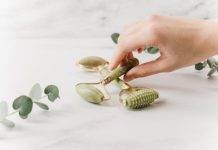
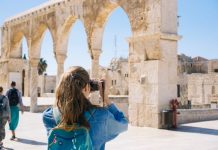


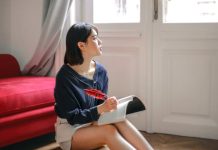





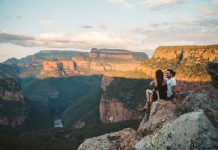

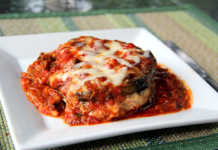
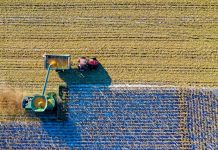






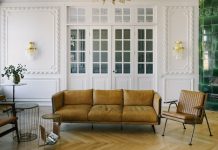
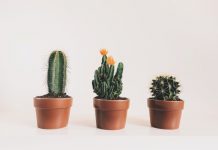

![Christmas Fan, Christmas Island Christmas Fan, Christmas Island [image source: Nicole Howard], crowd ink, crowdink, crowdink.com, crowdink.com.au](https://crowdink.com/wp-content/uploads/2016/07/001-Christmas-Fan-CHRISTMAS-ISLAND.jpg)
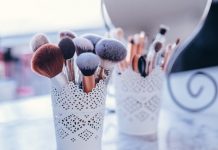



![5 Reasons You Should Travel Alone Airplane [image source: chau nguyen/ http://thedevilhatessweatpants.blogspot.com.au ], crowd ink, crowdink, crowdink.com, crowdink.com.au](https://crowdink.com/wp-content/uploads/2016/08/Chau-airplane-100x70.jpg)


